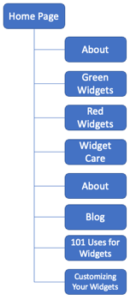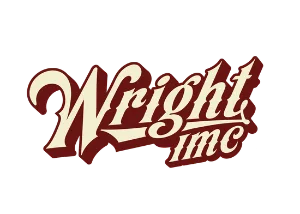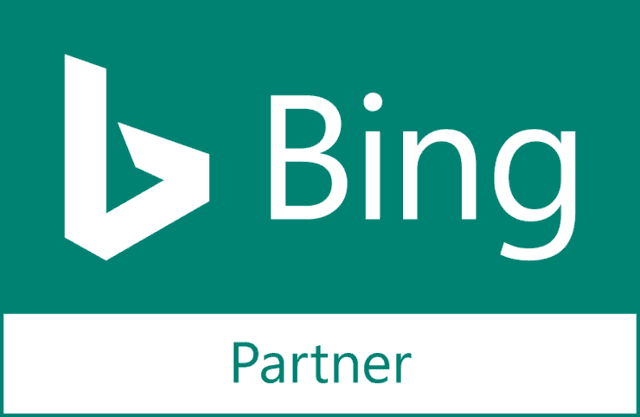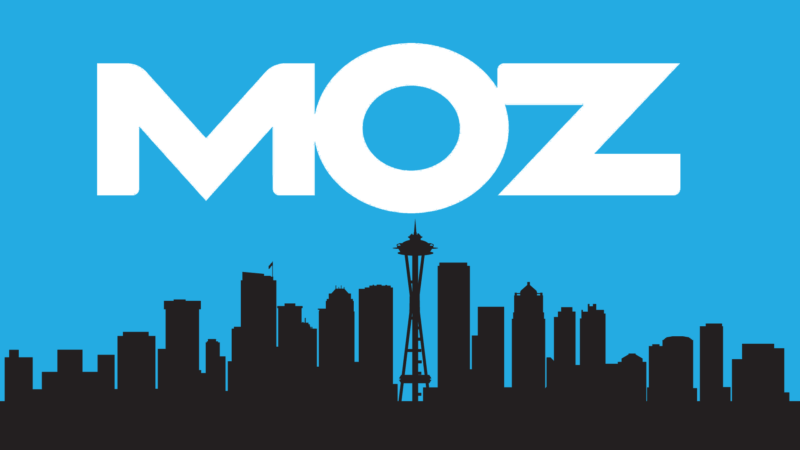Here at WrightIMC, we work on a lot of websites. Many of them come to us with a very flat directory structure. Some SEO-related challenges come with this way of organizing content. Let’s dig into this a bit.

While it’s easy to go with the default setup, some significant disadvantages outweigh the convenience of not setting up the CMS past the defaults.
The main challenge is that there are no clues about the context of the content and how different pieces of content fit together. A common way to introduce some context of what the page is about is by adding details to the URL slug (the last portion of the URL), such as:
- about-widget-company
- green-widgets
- red-widgets
- widget-care
- 101-uses-for-widgets
- etc.
While that can work (stressing “can”), things tend to get a little clunky as the site grows. If our pretend company starts selling differently sized widgets in additional colors, things can get a little out of hand. “small-red-widgets-for-children-under-4” gets a bit unwieldy.
If more than one person is working on the website, following a standard structure can quickly fall by the wayside. We’ve seen instances where it is very obvious that the website was updated over time by several different people. As they added their interpretation of URL structure, the information architecture became more disjointed and confusing.
On the search engine side, this type of structure makes it a little more challenging for them to understand how one piece of content relates to another. Algorithms are, after all, complex logical computer programs. Without a logical structure to follow, the algorithms can miss valuable clues, and your site may not perform as well as it otherwise would.
A better option for long-term success is to work out a solid information architecture plan and organize website content accordingly.
With this type of setup, there is a clear hierarchy of content and easy-to-follow clues as to how different pieces of content are related. You can easily see that “Green Widgets” and “Red Widgets” are both parts of the overall category of “Widgets.” Content about widgets is put into the “Blog” category.
Along with the logical structure and contextual clues, a pattern can be followed and built on. It’s much easier to document this type of arrangement, leaving little to interpretation. This type of setup also allows for expansion. The blog content could be broken down into topics (“Categories” in WordPress). If a new kind of widget is introduced, like “Blue Widgets,” it’s easy to see that it would have “Widgets” as the parent.
This structure also gives the search engines a very logical organization of content to follow.
Organizing content can be reasonably straightforward, especially for a brand new website that doesn’t yet have a lot of content. If you already have a site up and running and wonder if you should change everything, it’s essential to know what you’re getting yourself into. If your website is working:
- It is earning the proper amount of attention from unpaid search
- Your visitors are finding what they are looking for
- The website is doing what it’s supposed to do (sales, leads, etc.)
You may not need to make any changes.
If the site is not working, however, it is worth considering a reorganization of your content.
There are some critical things to consider when reorganizing content in an already-existing website. The most important thing to keep in mind is that it’s very likely that you will lose some ground in traffic from organic search for a short time while the engines respider your site and learn about the new structure. You can significantly mitigate that risk by making sure:
- Menus and other links on the website are updated
- Redirects are in place to help visitors and search engines understand the “changes of address”
- XML sitemaps are updated (if they are not generated automatically by the CMS)
If you’re wondering how to organize your content, a great resource is the book Information Architecture For the Web and Beyond by Peter Morville, Louis Rosenfeld, and Jose Arango. The book teaches more about information organization and some helpful exercises you can do to help you organize your website content. Of course, the SEO experts at WrightIMC are ready and able to help you better organize your website content.





